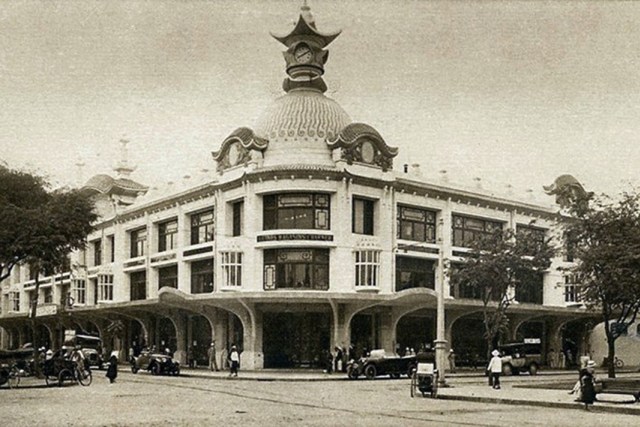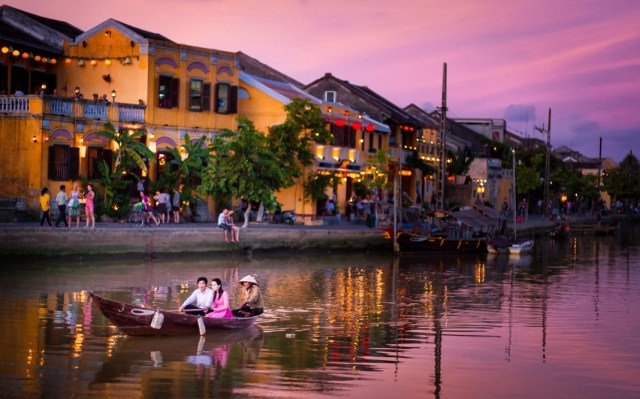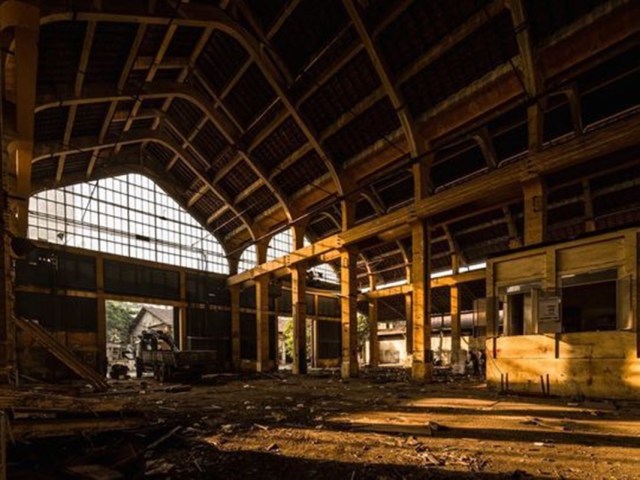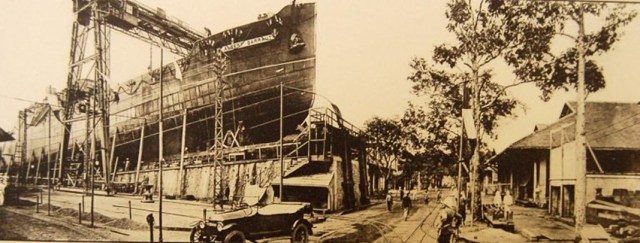Although there have been many suggestions from historical preservation movements, Taxiques have been destroyed in recent months. Real estate developers have decided to build a 43-storey complex to connect with the city's first metro line.
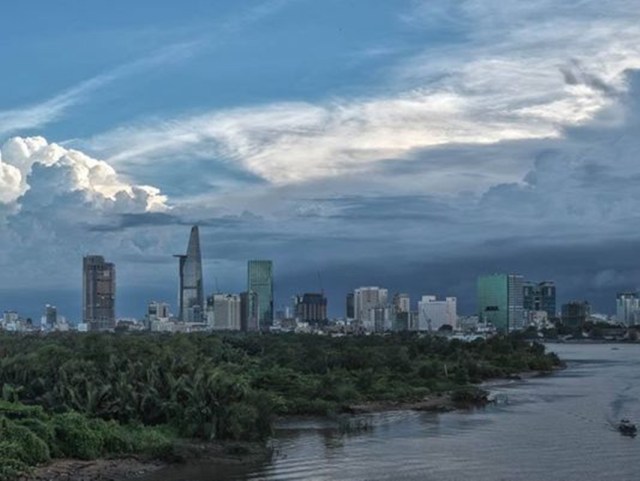
Horizon Chi Minh City (former Saigon). Photographer Alexandre Garel will publish photo book chronicling the legacy, and the destruction of them over the past five years.Taken by: Alexandre Garel.
The Tax Center was built in 1924 and is one of many historic buildings that have been razed or seriously transformed in the past 20 years.
Historic preservation claims that the builders and the government are intent on making the city more modern without regard to the relics of the colonial past. They also issued warnings about the destruction of historic buildings that would make the city more difficult to live and less attractive to tourists. Therefore, it can reduce the economic growth that the government hopes.
The image of the tax dispenser in the 1930s
Architect Tran Huu Khoa, 27, who led the petition, did not save. "The more people are attracted to the market economy, the more difficult it is to solve the problem. What is considered "luxury" concern as heritage preservation. But I have always been optimistic that a meaningful movement is increasingly being trusted and thriving in Vietnam. "
The Heritage Observatory website, launched in late January, is open to anyone who wants to call attention to any historic buildings in any city threatened by Vietnam. Information will be transferred directly to the government and civic organizations can intervene.
At present, the government has no system to intervene or protect heritage issues. Researchers, historians and people involved in the preservation of architecture say comprehensive inventory is the first important step in raising awareness of the value of historic buildings.
Daniel Caune - French, content specialist of Heritage Heritage site, worked in Vietnam for seven years: "We can not preserve or protect anything if we do not know it. Where. "The Heritage Stupa Page has archived 130,000 historical photographs with notes.
Caune also wrote an iPhone application that reminded photographers of the historic legacies they visited, and enhanced their knowledge and use of the navigation system to record those legacies on. map.
He put great hope into a Facebook community group called "Saigon Chao Lon: Then & Now" with 5,500 members presenting the history and present history of Saigon. Caune and Tim Doling, a British historian and founder of the group, say there are many good signs that young people in Vietnam are at the forefront of the historic preservation movement.
Kevin Doan, an architect in Saigon who is responsible for organizing the Heritage Tower page, said food shortages and housing were the main concerns after the war ended. . "Now that the economy is open and people of the older generation have a certain amount of money, they think building a new home is a big step forward," he added. "But more and more young people Enroll in participation in heritage conservation organizations. "
Mark Bowyer, who runs the rustycompass.com website, and has written extensively about Vietnam's tourism industry, said: "This is not just a heritage issue but an economic one. Destroying the heritage of Saigon is a reckless way of damaging tourism - but even worse, it harms the life of the city, the reputation of Saigon and moreover, in the long run, Harmful to its economic benefits. Heritage is no longer a private concern for foreigners in Vietnam "
An-Pham, an 18-year-old architectural student working with Caune, gives a list of historic buildings in Hoi An, a central city in Vietnam, to the Heritage Herbarium, as an example. About what can happen when preserved historical relics and advertising for tourism.
Hình ảnh phố cổ Hội An
The city center, Hoi An ancient town, is a UNESCO World Heritage site. This is purely state property, declared a national cultural heritage site in 1985. The long-term plan is to link with the nearby Cu Lao Cham biosphere reserve and the first area Vietnam's so-called "eco city."
South Hoi An Resort project in the future
At the end of last year, a $ 1.5 billion development project, to build the new Hoi An City, was the seaside real estate that bordering the city. Includes housing, shopping centers and offices. Promoted by Real Estate Promotion called "Heart of Vietnam Tourism."
Old French colonial villas and colonial government buildings attracted up to 8 million visitors to Vietnam each year.
French Consul General Emmanuel Ly-Batallan said: "Even in France, we do not have much evidence of the beautiful iron fences and stairs you see here." With large roofs to withstand storms with large wide windows are arranged reasonably to the wind.
The French consulate, now under construction by a skyscraper, is considered one of the best examples of Cochinchina's preservation of architecture, the French name for their colony in the South Vietnam.
The Ho Chi Minh City Planning Council has a proposal to limit the demolition of private villas, historic and cultural buildings that are awaiting approval by the city itself. City rights. The biggest barrier is finding a budget to help owners maintain those historic buildings. Many mansion reluctant to destroy them, the mansion was too dilapidated.
For example, last summer, a city center mansion with carved columns and tall domes was partially destroyed before neighbors went to local authorities to intervene. The media reported and the homeowner then gave up 10 months to get permission before he began to dismantle himself. This villa was partially destroyed while the owner was waiting for the government's decision. Pham Cong Luan told the Saigon Giai Phong newspaper, the demands of modern life and the lack of attention of the authorities made the maintenance of the self become difficult. Objections and motions often do not work much, especially when dealing with the wealthy. Ba Son Shipyard, built in 1790 for the Vietnamese royal navy, was destroyed in 2015, although it was considered a national heritage.
Ba Son was sold to private companies for real estate development. A riverside complex with luxury housing is surrounded by a park, a cultural center and a transportation hub being built in the old part of the 18th century shipyard. Many skyscrapers 60 floors are also planned to be built in the future.
"In the eyes of those concerned about preserving the heritage, the destruction of the Ba Son shipyard is one of the city's major misconceptions," said Mr Doling.
Inside the Ba Son Shipyard when it is being demolished by 2015. The shipyards still have many French-built workshops, including many industrial architecture icons dating back to the 1880s, Taken by: Aleandre Garel.
Preservation History can be difficult in the economic environment of Ho Chi Minh City today. One of the city's oldest churches, the Thu Thiem parish - built in 1875 - has also been demolished to make way for a $ 1.2 billion estate.
Launched the l'Albert Sarraut at Ba Son Shipyard. Saigon. Source:saigoneer.com
Proposed retention of the 3,500 Signature Taxi, and enough public attention that the real estate developers promised to retain a portion of the old building and put them in the court's front. New skyscraper
The double staircase of the brilliant Taxi Shop with elaborate brickwork Morocco is one of the world's leading examples of colonial French passions with the art of North Africa. The Taxi Owners also agreed to keep mosaic tiles inside the building, but the stairs were demolished and the bricks were removed without telling what to do with them. Historical architectural treasures are declining, and it is time to increase the protection of each community. The Ananda students share, "There is no reason to destroy everything," and plenty of places in the city are enough for both historic buildings and new developments. "But people still say they can not get anything from historic heritage sites."
Author: Zanna K. McKay
USA TODAY

